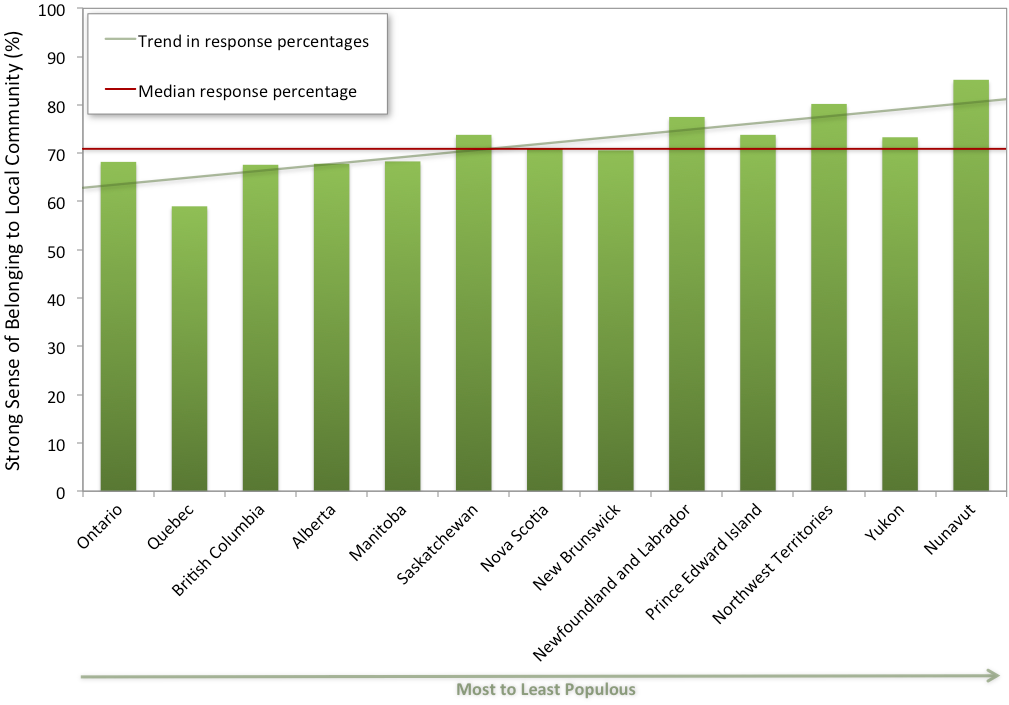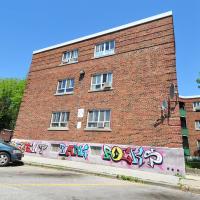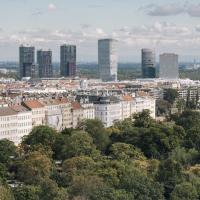January 28, 2014
Last week, we released a series of area-based visualizations created through a thematic meta-analysis of 55 e-Dialogues and 53 CRC case studies. One of the themes explored through this analysis was ‘sense of place’ and how it relates to community sustainability. Through the visualization, social capital is seen as particularly relevant to sense of place, which is consistent with previous research identifying social bonding1 and social identity2 as integral to people’s relationship with place and community.
What makes people feel they ‘belong’ in a community? The graph below shows the number of people in Canadian provinces and territories that have a strong sense of belonging to a local community (estimated from the 2012 Canadian Community Health Survey). The general trend shows that percentages increase as population size decreases. The provinces significantly below average (Ontario, Quebec, BC, Alberta, and Manitoba) are those that contain the top ten most populous urban centres in Canada, which together comprise almost half of the country’s total population3. These observations illuminate a potentially negative relationship between ‘sense of belonging’ and ‘urbanity’. As the percentage of urban dwellers in Canada steadily increases, should we be thinking about how to design cities in a way that enhances belonging and social connectivity? How do we ensure that our cities are also communities?
1 Lai, P.-H., and U. P. Kreuter. 2012. Examining the direct and indirect effects of environmental change and place attachment on land management decisions in the Hill Country of Texas, USA. Landscape and Urban Planning 104(3-4):320–328.
2 Uzzell, D., E. Pol, and D. Badenas. 2002. Place identification, social cohesion, and environmental sustainability. Environment and Behavior 34(1):26–53
3 Calculated from figures obtained from Statistics Canada: http://www12.statcan.gc.ca/census-recensement/2011/dp-pd/hlt-fst/pd-pl/…
- Log in to post comments




CRC Comments